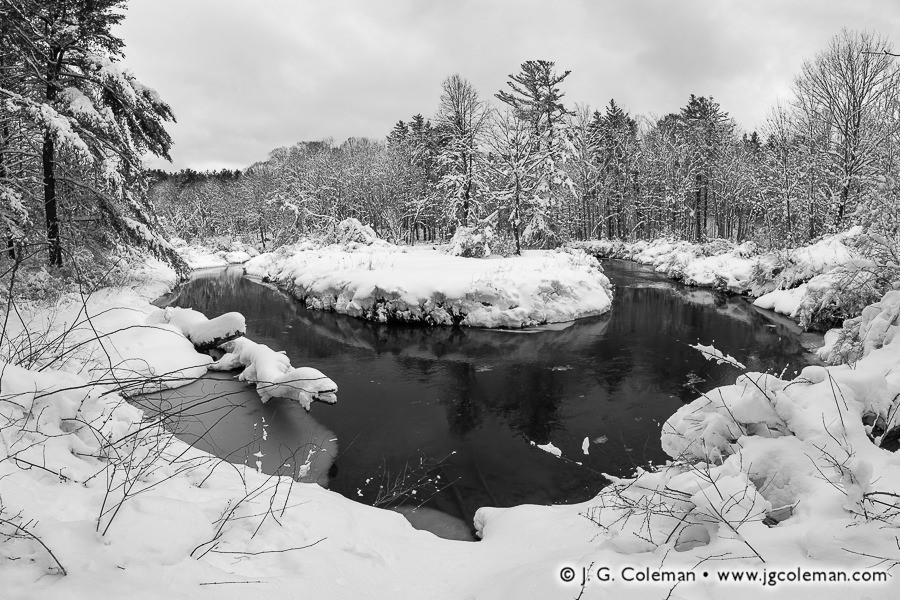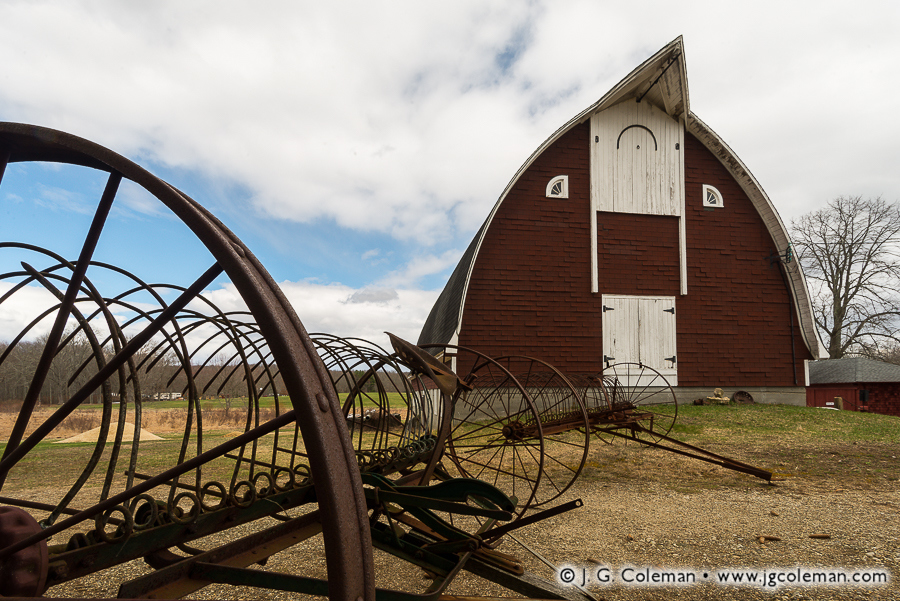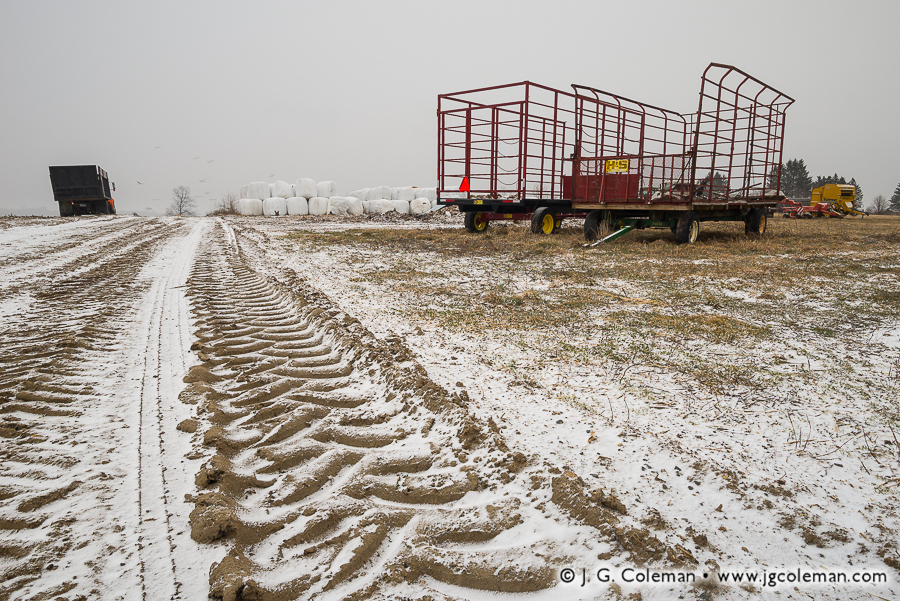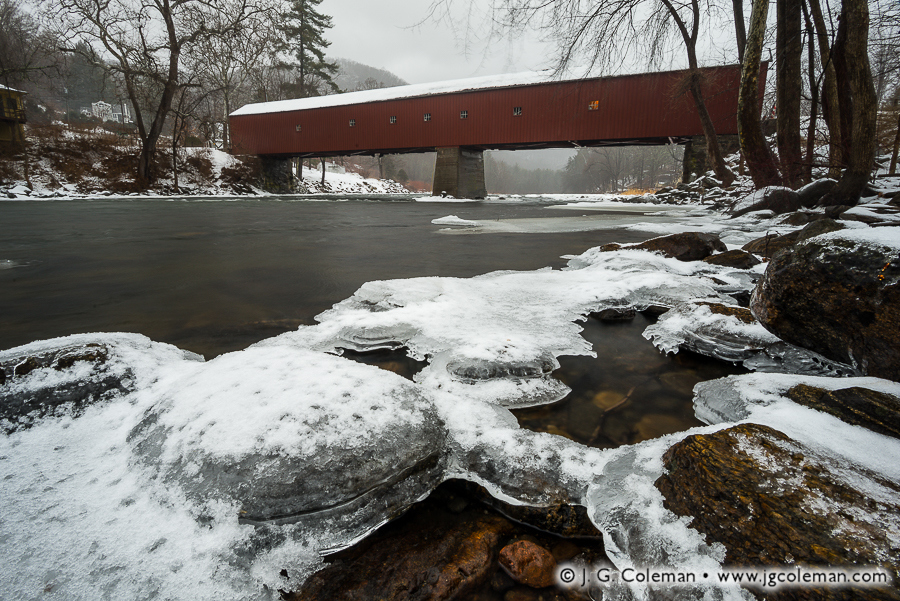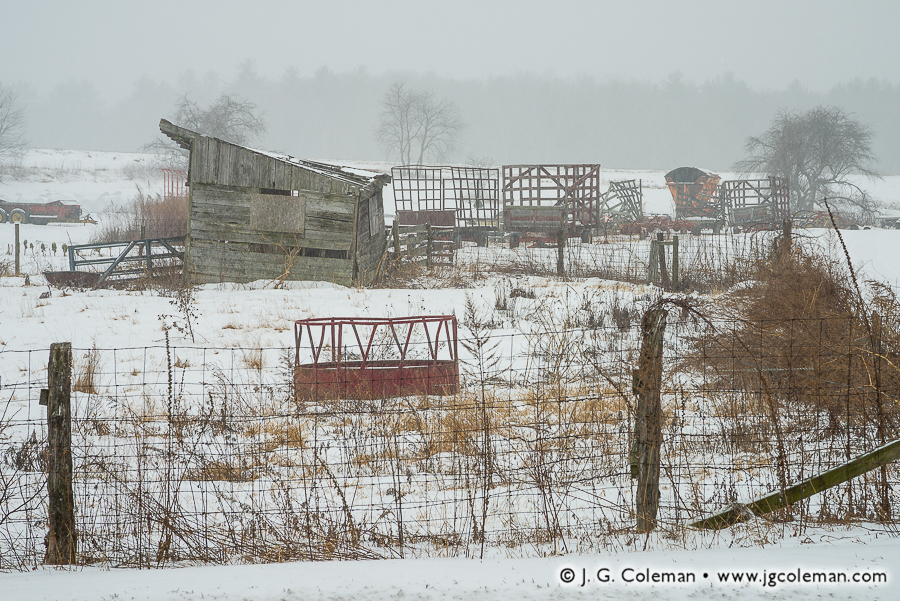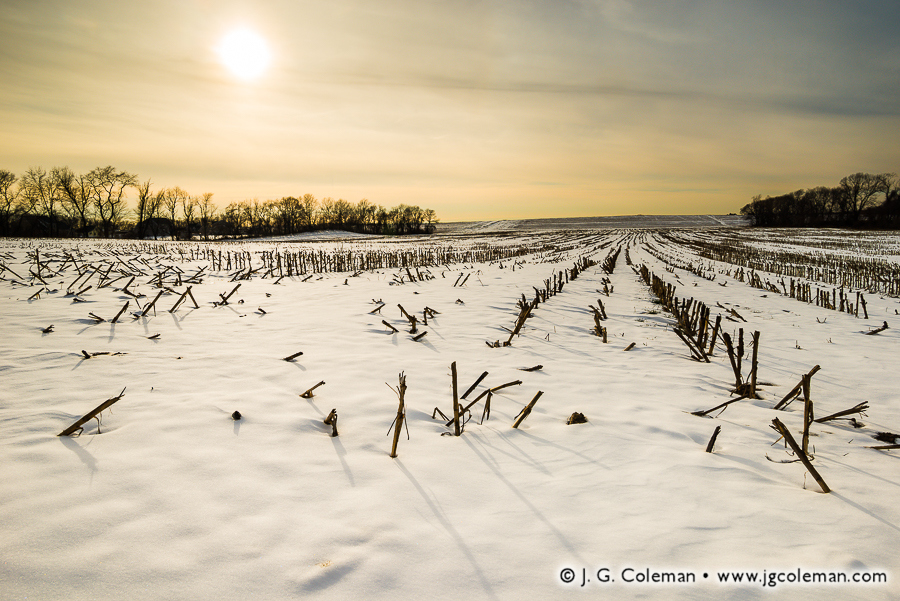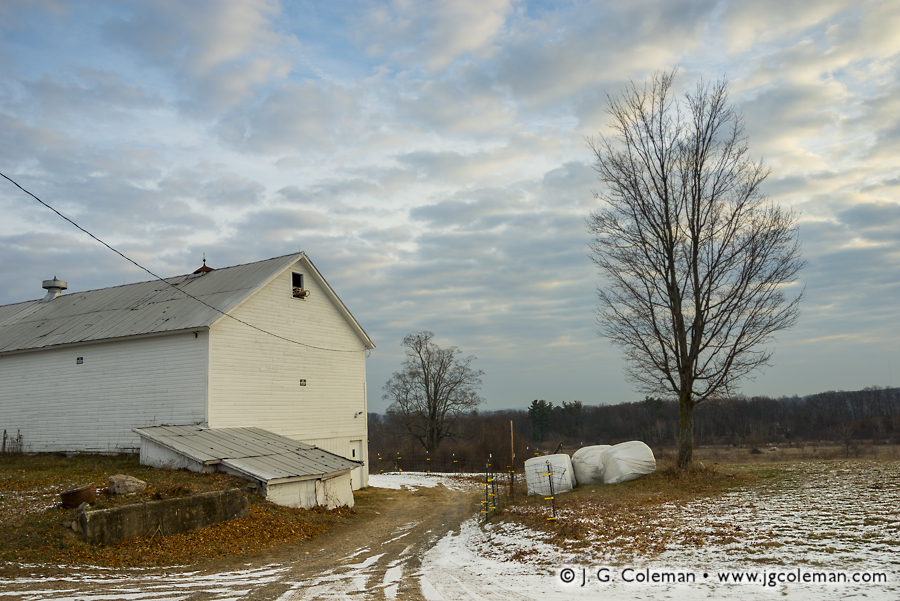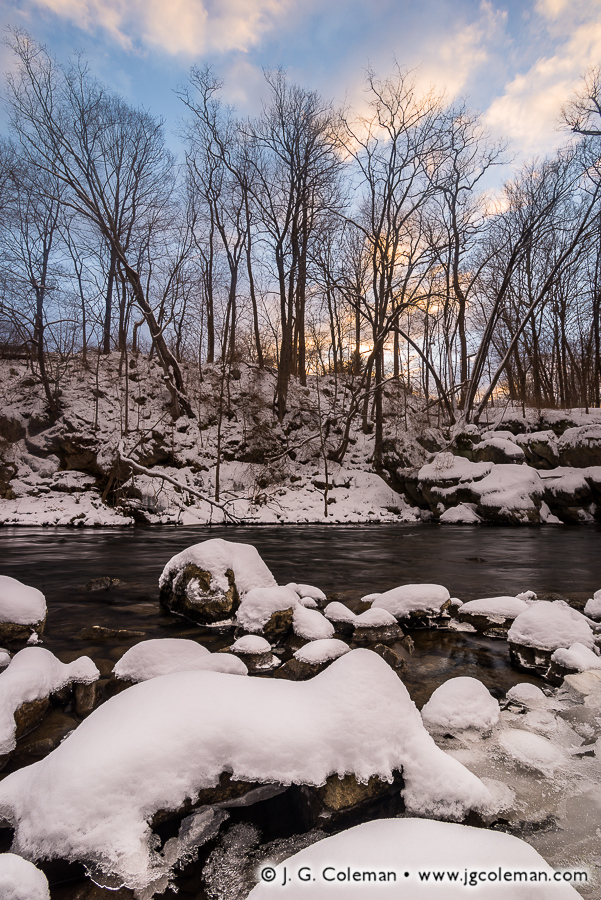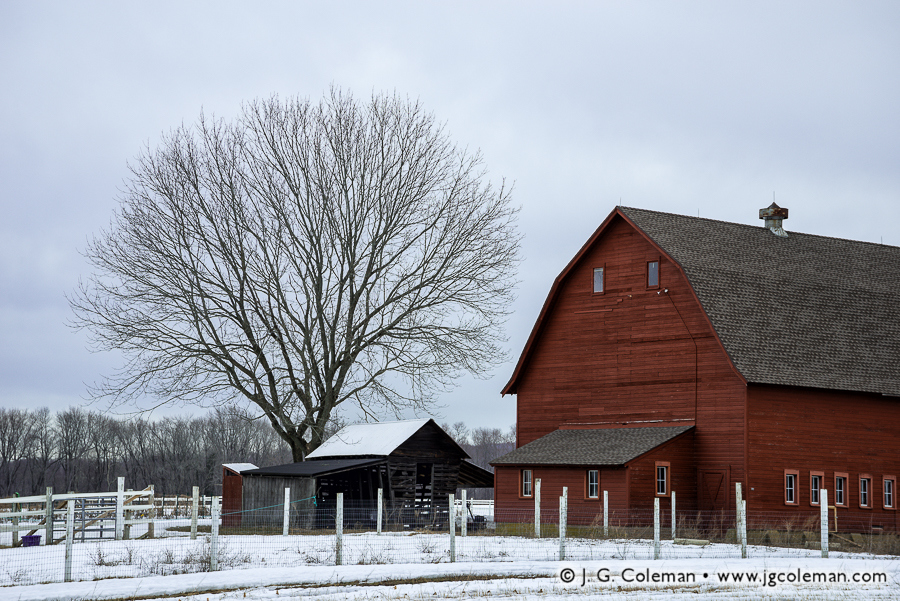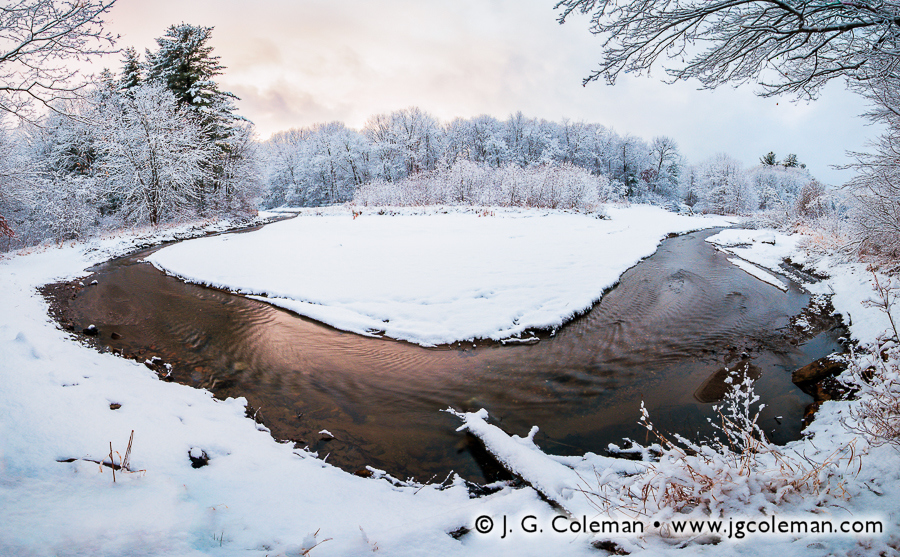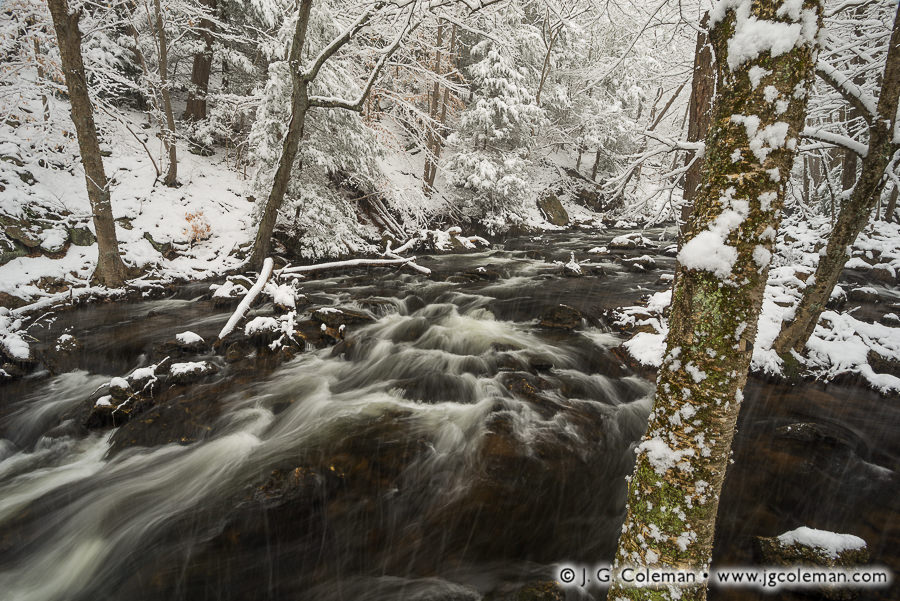
Roaring Brook at Cotton Hollow Preserve, Glastonbury, Connecticut
“The birds have a right to complain of misplaced confidence, and so have we, since the blandness of spring the day before deluded us into regarding her intentions as honourable,” wrote Charles Whiting in 1903, lamenting a springtime snow in New England not so different from the one we endured a few days ago here in Connecticut. Indeed, one could scarcely discern this April vista of Roaring Brook from wintry visions of a January blizzard.
But even Whiting had to concede a certain admiration for the waning wiles of winter. “It was really very beautiful snow, and whether dissipating in the sunshine or shining in the moonlight, it was several degrees whiter than the average. Less meteoric dust in it. Spring snow always looks so very young, and it is a blessing to the new grass and young grain,— one of those blessings that brighten as they take their flight.”
Purchase a Fine Art Print or Inquire About Licensing
Click here to visit my landing page for “An April Greeting” to buy a beautiful fine art print or inquire about licensing this image.
Want to See More?
Be sure to check out all of my work from Glastonbury, Connecticut.


